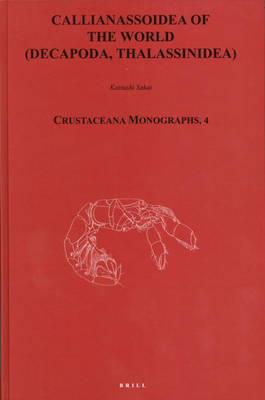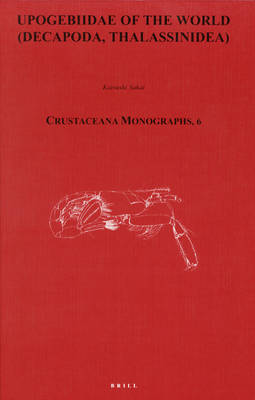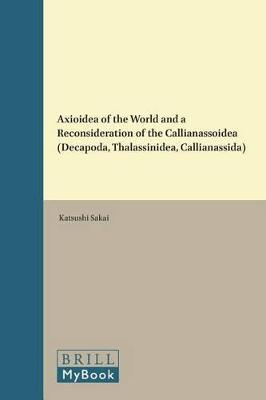Crustaceana Monographs
3 primary works
Book 4
In this work, the composition of the superfamily Callianassoidea is reassessed and the classification of its included taxa is critically reviewed. The material examined mainly originates from the collections of the Zoological Museum of the University of Copenhagen, and comprises samples from the Galathea Expedition 1950-1952, Dr. Th. Mortensen’s expeditions, including the Java-South African Expedition 1929-1930, and Dr. G. Thorson’s Persian expedition. In all, three of the possibly five families currently incorporated in the Callianassoidea, i.e., Callianassidae, Gourretiidae, and Ctenochelidae, with a total of 12 subfamilies, 20 genera, and 219 species, are represented in this comprehensive revision.
The status of the various taxa recognized is placed in the broader context of a re-evaluation of the contents of the infraorder Thalassinidea, in which characters derived from the anatomy of the gastric mill may play a pivotal role.
The contents of the book are not only of interest for systematists but also for ecologists and environmental biologists focusing on neritic and benthic biocoenoses, as these mud shrimps are important agents in bioturbation processes of the sea floor.
The status of the various taxa recognized is placed in the broader context of a re-evaluation of the contents of the infraorder Thalassinidea, in which characters derived from the anatomy of the gastric mill may play a pivotal role.
The contents of the book are not only of interest for systematists but also for ecologists and environmental biologists focusing on neritic and benthic biocoenoses, as these mud shrimps are important agents in bioturbation processes of the sea floor.
Book 6
In this work, the composition of the family Upogebiidae is reasessed and the classification of its included taxa is critically reviewed. The material examined mainly originates from the collections of the Forschungsinstitut Senckenberg, Frankfurt am Main and the Zoological Museum of the University of Copenhagen, comprising samples from the Galathea Expedition 1950-1952, Dr. Th. Mortensen's expeditions, including the Java South African Expedition 1929-1930, and Dr. G. Thorson's Persian expedition. In all, two subfamilies, 11 genera and 157 species are represented in this revision.
The status of the various taxa recognized is placed in the broader context of a re-evaluation of the contents of the infraorder Thalassinidea.
The contents of the book are not only of interest for systematists but also for ecologists and environmental biologists focusing on neritic and benthic biocoenoses, as these mud shrimps are important agents in bioturbation processes of the sea floor.
The status of the various taxa recognized is placed in the broader context of a re-evaluation of the contents of the infraorder Thalassinidea.
The contents of the book are not only of interest for systematists but also for ecologists and environmental biologists focusing on neritic and benthic biocoenoses, as these mud shrimps are important agents in bioturbation processes of the sea floor.
Book 13
The present section, Callianassida Dana, 1852, has recently been separated from the Thalassinida Dana, 1852; together these two sections constitute the infraorder Thalassinidea within the Decapoda. The section Thalassinida includes one superfamily, Thalassinoidea Dana, 1852, which is not considered herein. The Callianassida include two superfamilies, Axioidea Huxley, 1879 and Callianassoidea Dana, 1852. Those two superfamilies are reviewed according to the presence or absence of a rostral carina; cardiac sulcus(i); cardiac prominence; dorsal oval of the carapace; linea thalassinica; setal rows on carapace, abdomen, tail-fan, and pereiopods; the posterior whip of the maxilla 2 scaphognathite; a dorsal plate or lateral notch on the uropodal exopod; the male Plp1-2; and a median tooth of the prepyloric ossicle. In the present new classification, the section Callianassida thus comprises two superfamilies, Axioidea and Callianassoidea, 19 families including one new family and two families with a new status, 8 subfamilies including one subfam. nov., 116 genera including 41 gen. nov. and 8 genera sensu nov., and 419 species including 12 spp. nov. and 2 nom. nov.


